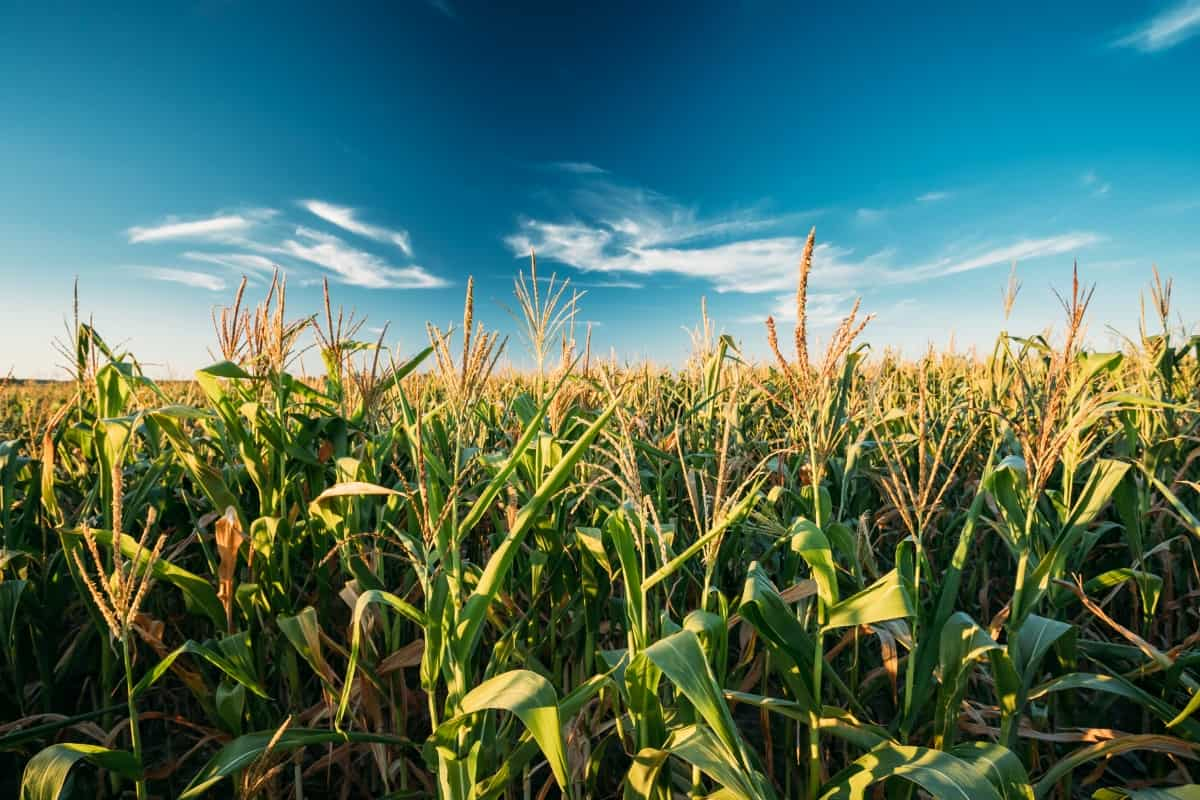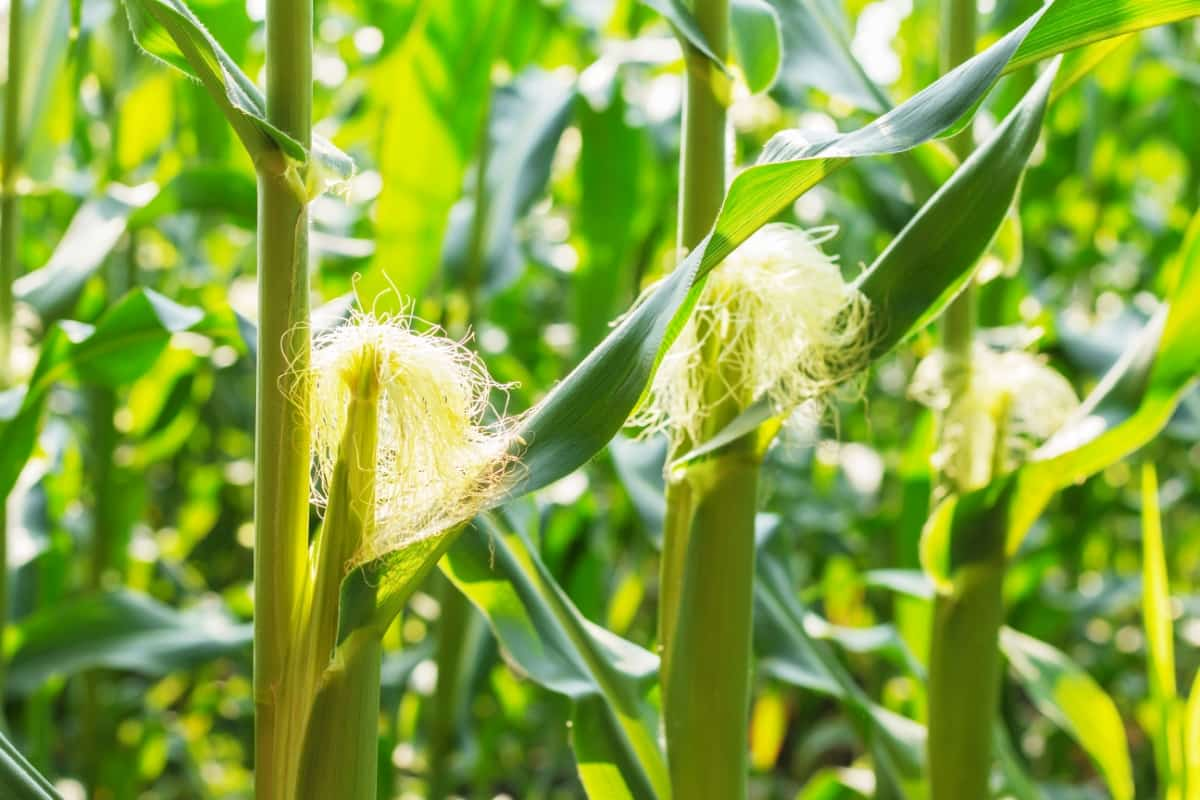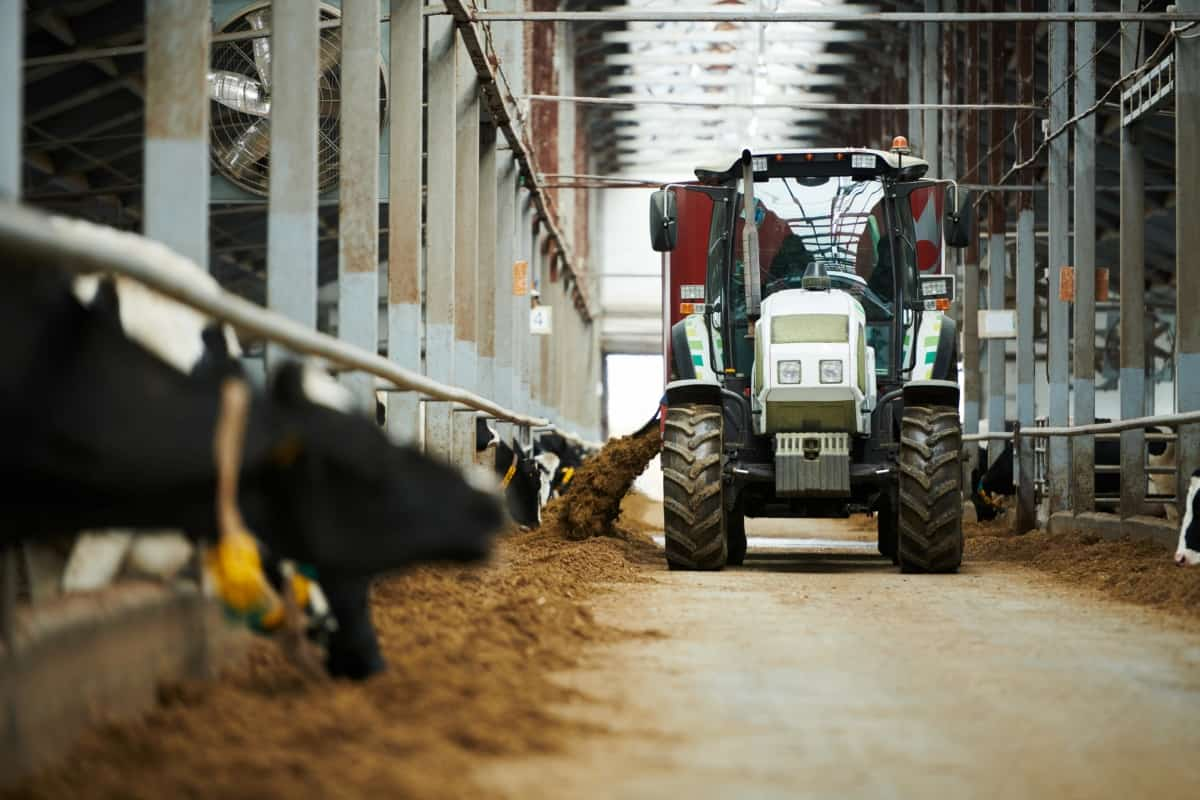Properly preparing and storing corn silage ensures your livestock gets the best nutrition year-round. Making corn silage offers numerous benefits for livestock owners and farmers. It provides a reliable source of high-quality feed throughout the year. This is particularly important in areas with limited grazing land or where weather conditions affect pasture availability.

How to Make Corn Silage
Understand the Basics
Corn silage is a vital component of livestock feed, and its importance cannot be overstated. Corn silage serves as a valuable source of energy for livestock. This helps to meet their nutritional needs and ensures optimal growth and productivity. Additionally, making corn silage allows farmers to utilize their crop yields efficiently. Instead of relying solely on fresh corn or grain for animal feed, converting excess crops into silage minimizes waste while maximizing the available food supply for the herd.
Select the Right Corn Varieties
Selecting suitable corn varieties for silage is crucial to ensure a high-quality feed for your livestock. Take into account the maturity of the corn variety. Ideally, you want a variety that reaches optimal dry matter content at harvest time. This will help ensure proper fermentation and nutrient preservation during ensiling.
Next, consider the yield potential of different varieties. Look for hybrids that have shown good yields in your region and have consistently performed well under similar growing conditions. Another factor to consider is disease resistance. Additionally, pay attention to agronomic traits such as plant height and standability.
Optimal Harvesting Time
Harvesting at the right time ensures you capture maximum nutritional value from your corn crop. You may have lower yields and reduced energy content if harvested too early. On the other hand, delaying harvest can lead to increased lignification of plant material, which decreases digestibility and overall feed quality.
To determine if your corn is ready for harvest, keep an eye on the kernels’ moisture content. Ideally, it should be between 65% and 70%. Each field may have different optimal harvesting times based on soil type and climate variations. So, always evaluate each situation carefully.
Chop and Process Corn
You will need a reliable chopper or harvester equipped with sharp blades to cut through the stalks effectively. Make sure to adjust the height of the cutting mechanism to achieve an optimal length of chopped material. Once you’ve harvested your corn, it’s time to feed it into the chopper.
In case you missed it: Corn Companion Plants: Benefits, What and What Not to Plant with Corn

The chopped corn should then be conveyed into wagons or trucks for transportation to storage areas. Next, consider adding a suitable additive, such as microbial inoculants or enzymes, during chopping. Attention to detail during the chopping and processing phase sets the foundation for high-quality silage production.
Ensiling Process
- Fill the silo or bunker: Start by filling your chosen storage structure with chopped corn. It’s essential to pack it tightly to remove as much air as possible, ensuring proper fermentation.
- Cover the surface: Once the silo or bunker is filled, cover the surface of the corn with a plastic sheeting designed for silage preservation. This will help maintain anaerobic conditions and prevent spoilage.
- Add weight and seal edges: Place tires or other heavy objects on the plastic sheeting to create pressure and ensure even compaction throughout the pile. Seal all edges securely to prevent air from entering.
- Fermentation period: Allow at least three weeks for fermentation, although longer periods can improve feed quality further.
- Turn off machinery inside Silo: During this time, avoid driving machinery over or disturbing the silo as it may damage compaction and disrupt proper ensiling.
Manage Fermentation and Ensuring Quality
To ensure good fermentation and high-quality silage, it’s essential to consider several key factors. First, make sure that you have enough moisture in the chopped corn. If your corn is too dry, add water during chopping or use additives to increase moisture levels. Next, be mindful of particle size when processing the corn. A finer chop will allow for better compaction and reduce air pockets within the silage pile. Additionally, avoid overpacking or underpacking the silo/bunker – aim for a density of 15-17 pounds per cubic foot.
During fermentation, lactic acid bacteria convert sugars in the crop into lactic acid, which helps preserve nutrients and inhibit undesirable microbial growth. After packing up your silo properly with tight layers of chopped corn at ideal moisture levels and using appropriate additives if needed and cover it with plastic sheeting or tires weighted down with sandbags to create an airtight seal.
Store and Managing
Adequate Storage: Corn silage should be stored in airtight containers such as silos or bunkers to prevent spoilage and exposure to air. It is essential to have enough storage capacity for the silage produced.
Packing Density: The packing density of corn silage is vital for fermentation and preservation. It is recommended to achieve a packing density of 15-17 pounds per cubic foot using heavy machinery or tractors during the filling process.
Covering Silage: To protect corn silage from rainfall, sunlight, and oxygen, it should be covered with plastic sheets or tarps immediately after filling the storage structure. This helps create an anaerobic environment necessary for fermentation.
Maintaining Hygiene Standards: Keep equipment used in handling and feeding clean and free from contaminants that could affect animal health or cause potential issues during ensiling.
Feed Corn Silage to Livestock
It’s essential to consider the nutritional needs of your specific animals when developing a feeding plan. Corn silage can vary in nutrient content depending on factors such as maturity at harvest and storage conditions. Conduct regular feed analysis tests to determine its quality and make necessary adjustments.
In case you missed it: How to Suppress Weeds Organically with Corn Gluten Meal

When introducing corn silage into your animals’ diet, gradually increase the amount over several days or weeks. Monitoring feed intake closely is also essential, as overconsumption can lead to weight gain or even metabolic disorders in certain animals. Water availability plays a significant role in digestion; always provide clean drinking water alongside corn silage feeding for optimal animal hydration levels.
Test and Analyze Quality
It is essential to ensure that it meets the nutritional needs of your livestock. By evaluating its composition, you can make informed decisions about feeding strategies and adjust management practices accordingly. One common test used to assess corn silage quality is dry matter (DM) analysis. Another crucial parameter to evaluate is crude protein content. Testing for protein levels will help you determine if additional protein sources should be added to balance the diet. Fermentation characteristics are also assessed through pH testing.
Troubleshoot Common Issues
Poor fermentation: If your corn silage smells bad or has a high pH level, it may indicate poor fermentation. This can be caused by insufficient packing or inadequate oxygen exclusion. To fix this issue, ensure proper packing density and use an effective inoculant to promote fermentation.
Heating and spoilage: Excessive heating of corn silage can lead to nutrient loss and spoilage, affecting its overall quality. Ensure proper compaction during ensiling and store the silage in a well-sealed structure with good ventilation.
Inconsistent feed value: Variations in feed quality within a single batch of corn silage may occur due to differences in maturity levels across plants or uneven chopping length during processing. Carefully monitor both harvesting time and processing techniques for more consistent feed value.
In case you missed it: How to Treat Brown Spots on Corn Plant Leaves Naturally: Causes, Fix With Effective Organic Home Remedies

Conclusion
Corn silage has a higher energy content than other forages, making it an excellent choice for meeting the nutritional needs of animals such as dairy cows or beef cattle. It contains many carbohydrates essential for milk production and weight gain. It helps maximize feed efficiency by reducing wastage and spoilage.
- Feed Your Flock for Less: Top 10 Tips to Save on Chicken Feed
- Ultimate Guide to Ossabaw Island Hog: Breeding, Raising, Diet, and Care
- Hatching Answers: The Top 10 Reasons Your Chickens Aren’t Laying Eggs
- Eggs and Economics: Breaking Down the Cost of Raising Backyard Chickens
- Defend Your Greens: Proven Methods to Keep Iguanas Out of Your Garden
- Ultimate Guide to Cinnamon Queen Chicken: A Comprehensive Guide for Beginners
- Ultimate Guide to California Tan Chicken: Breeding, Raising, Diet, Egg-Production and Care
- Ultimate Guide to Marsh Daisy Chicken: Breeding, Raising, Diet, and Care
- 10 Types of Chicken Farming Businesses You Can Start for Profits